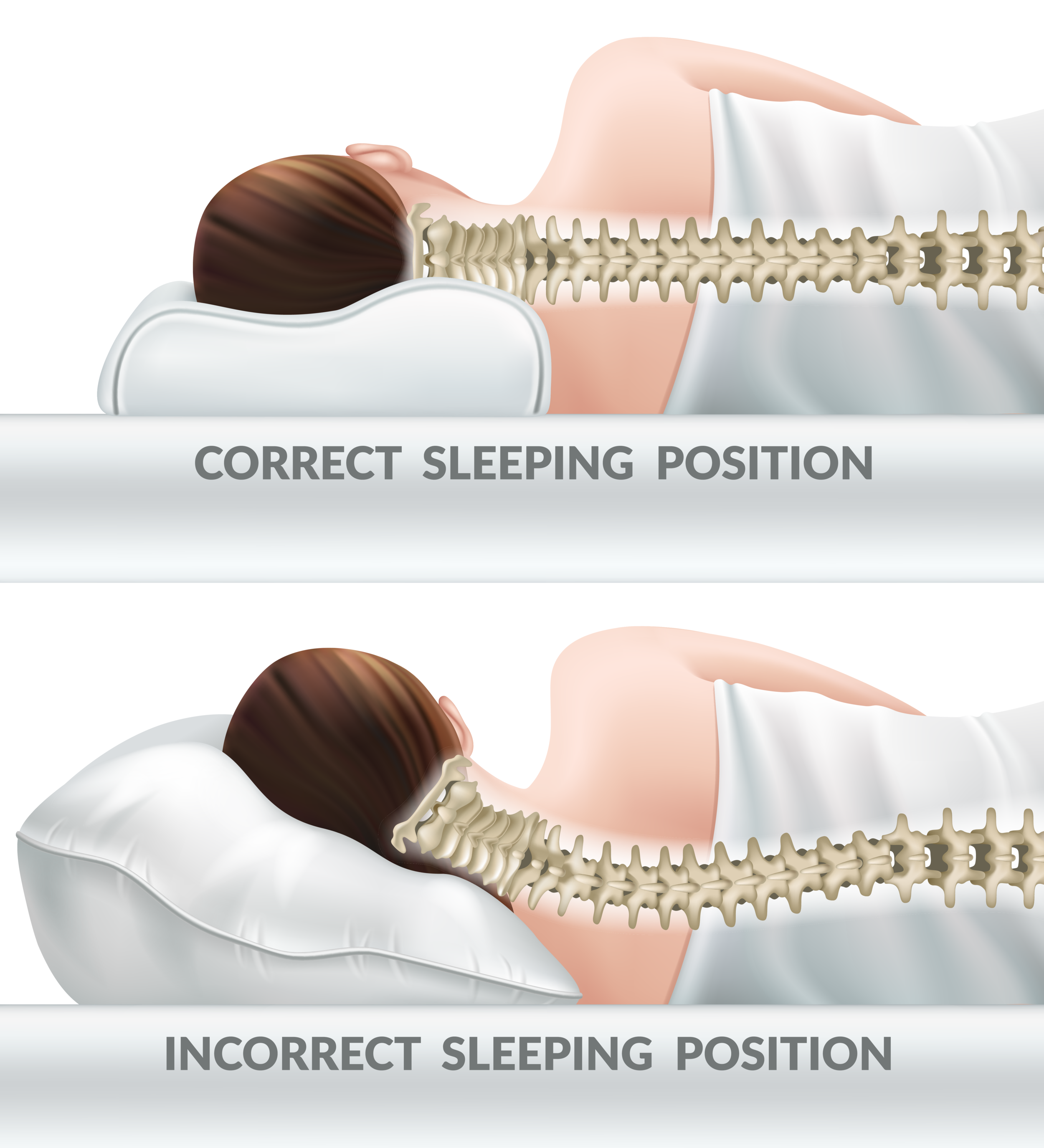Your Sleeping Posture Counts! Here’s Why.
If you’ve ever dealt with back pain or neck pain, you’ll probably understand just how much the way you sleep can affect your body. Sleeping in a malaligned position can cause pain or diminished range of motion for days or even weeks afterwards.
Along with daytime posture and exercise, sleeping in ideal positions is one of the best things you can do to avoid back and neck pain. And as an added bonus, you’ll probably find that the quality of your sleep improves as well.
Here are a few easy things you can try to improve your sleeping posture:
Avoid sleeping on your stomach.
If you only pick one tip from this list, let it be this one. Sleeping on your stomach is a clear culprit of neck and back pain because your spine is not in a neutral position. If you absolutely must sleep on your stomach, make sure you use a flat pillow or no pillow at all.
Make sure your pillow is the right height.
A pillow that is too fluffy or too flat will throw off your neck alignment, resulting in neck and upper back pain. If you aren’t sure if your pillow is throwing off your sleep posture, use a mirror to make sure your head is perfectly parallel to the floor while lying on both your side and your back. Keep in mind that your pillow height changes over time with use, so it’s a good idea to test it out regularly, particularly if you are experiencing any pain that could signal something’s off.
Check your mattress.
Waking up with back pain could be an indicator that it’s time to replace your mattress. There’s a common belief that firm mattresses are best for your back, but actually, medium-firm mattresses are often the best choice. Too stiff of a mattress will not let your body sink in at all, which can throw off your alignment. (Just check yourself out lying on the floor to see what we mean.) Too soft of a mattress, however, does not provide adequate support. Also, make sure you’re flipping your mattress as well to avoid wearing it out in the same spots.
If you sleep on your side, use a pillow between your knees to align your hips.
You can also use a rolled towel if you’re short on pillows.
If you sleep on your back, try using a pillow, cushion, or rolled towel under your knees.
This helps get your hips into a neutral position and align the spine. If you’re a back sleeper who has lower back pain, you’ll likely benefit from this tip most of all.
Pay attention to the way you get up in the morning.
It’s not technically sleeping, but the way you get out of bed in the morning counts. The best way is to flip to your side with your knees bent at a 90 degree angle, and then using your arms as support in front of you, pull yourself up with a straight spine. Your muscles are tighter in the morning before you’ve gotten a chance to move around and warm up, so they are particularly prone to strain.
We hope that helps you get a better night’s sleep and keep your back and neck feeling great. If that ship has sailed and you’re already in pain, please reach out to schedule an appointment with one of our physical therapists and we’ll get you fixed up.

